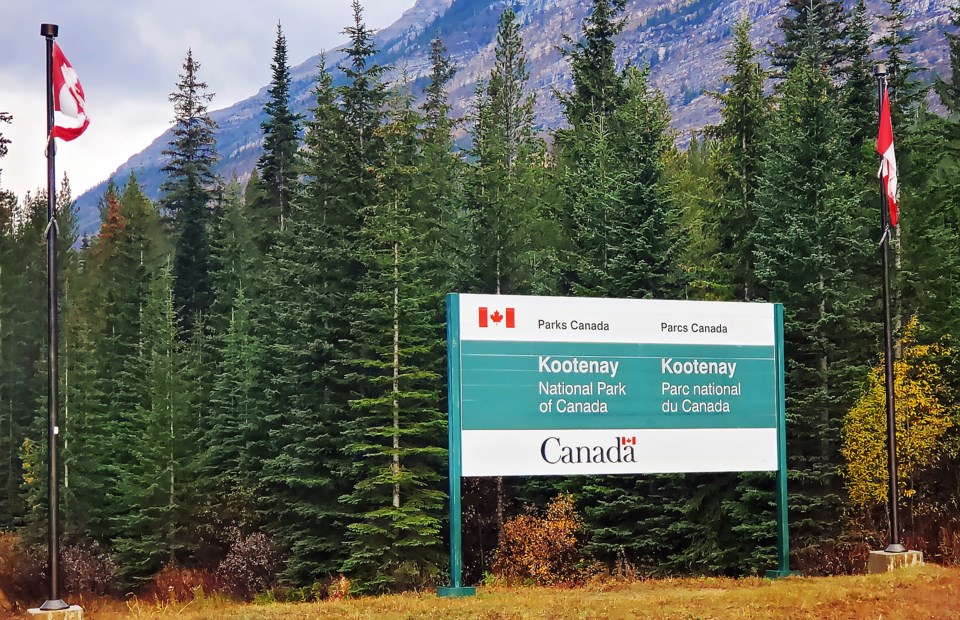KOOTENAY – A lightning-sparked wildfire in Kootenay National Park has been extinguished after several weeks of battling the blaze.
Parks Canada fire experts say the fire was contained at 288 hectares, including 45 hectares that spread onto neighbouring provincial lands in British Columbia.
Charlie McLellan, the incident commander for the Mitchell Ridge wildfire and fire and vegetation specialist for Lake Louise, Yoho and Kootenay field unit, said Parks Canada hired a company that flies drones at night to do infrared scanning of the entire fire last Thursday (June 8).
“They fly in a pattern that scans the whole fire for any thermal imaging during the night time, so it’s quite effective and they found two hot spots out of the entire 288 hectares. The next day our crews went out and extinguished those,” said McLellan.
“At that point, between ourselves and the BC Wildfire Service, we decided to classify this fire out or extinguished. Given the location where we can see it relatively well from the Kootenay viewpoint and other locations, we will continue to monitor it.”
The fire was sparked by lightning on May 17, approximately two kilometres east of the Kootenay Valley viewpoint on Highway 93 South and about seven kilometres north of Nipika Mountain Resort.
During unseasonably dry, warm and windy conditions, the out-of-control fire quickly spread to the eastern park boundary and onto provincial lands.
At the height of the wildfire, Parks Canada had 33 firefighters supported by four helicopters bucketing the flames. BC Wildfire Service had another 28 firefighters on its side of the border.
“It was good that we went full response on it so that we caught the fire while it was still relatively small and it didn’t become something we have to manage long-term,” said McLellan.
McLellan said at no time did the fire threaten buildings or other infrastructure, but said the concern was centred on the wildfire potentially jumping the Kootenay River.
“It could have had implications on the 93 South,” he said.
Four days after the wildfire started, a remote weather station and rain gauges near the fire recorded about 17 millimetres of rain, but not much more rain fell after that.
“A lot of the weather forecasting was suggesting we would get rain and it didn’t really fully materialize on the fire,” said McLellan.
A wildfire burning so early in the season came with some ecological benefits for Kootenay National Park.
Starting earlier in spring means a wildfire isn't typically as severe, according to McLellan, who said it doesn’t burn as deep into the ground.
“That's often why we would conduct prescribed fires in the spring to capitalize on some of those benefits,” he said.
For this wildfire in particular, McLellan anticipates good benefits for wildlife, including ungulates and bears. Part of the fire also burned in a location of a prescribed fire operation in 2008.
“The area burned also had mountain pine beetle in the 1980s, and as a result, there’s a lot of coarse woody debris on the ground – logs – and the fire helped consume some of that so it becomes more favourable for ungulates to move around,” he said.
“There was actually quite a bit of sign of elk and deer within the fire, even while it was active, which was interesting.”
A prescribed fire has also been on the books for this area of Kootenay National Park over the coming years.
This will only happen under certain conditions such as appropriate weather, moisture, wind direction, supporting resources and only goes forward when the safety of the public, crews, buildings and neighbouring lands can be managed.
“We do plan to do a prescribed fire within that general area again in the coming years to increase those ecological benefits, but obviously when all the aspects align and when the time is right,” said McLellan.
“When the wildfire started this year, it wasn’t a good time to have fire in that location given how early the spring was and resources available and what was happening elsewhere.”




